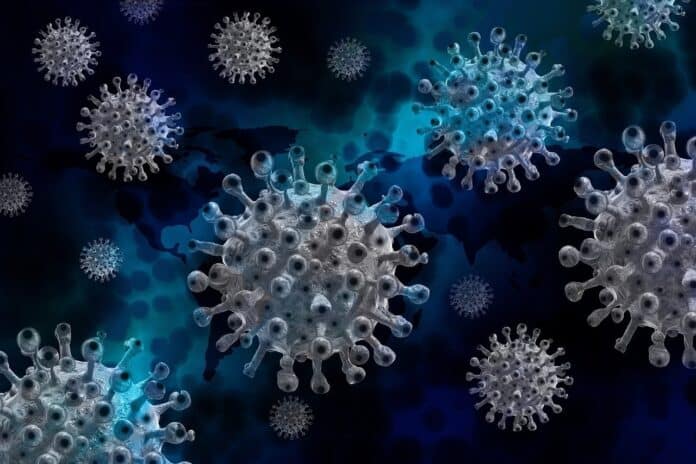A typical side effect of COVID-19 infection is the Post Acute Sequelae of Severe Acute Respiratory Syndrome Coronavirus-2 (PASC) infection syndrome.
A new study published in Pulmonary Circulation examines changes in oxygen extraction after SARS-Cov-2 infection (PASC) illness, often known as “long COVID.”
PASC may impact half of COVID-19 patients who recover from COVID. A chronic decrease in exercise tolerance is one of the severe symptoms.
This study, led by Inderjit Singh, MBChB, BMedSci, FRCP, assistant professor (pulmonary, critical care, and sleep medicine), and Hyung J. Chun, MD, associate professor adjunct, examined a group of patients using invasive cardiopulmonary exercise testing and multiplex proteomics profiling to look at thousands of circulating proteins.
While earlier research has demonstrated immune system dysregulation after COVID-19 infection, no study to date has connected these findings to the impaired oxygen extraction that may be a key factor in the persistence of exertional intolerance in long-term COVID patients.
Inderjit Singh said, “We previously demonstrated on invasive cardiopulmonary exercise testing (iCPET) that the pathophysiologic abnormality in patients with PASC was a primary peripheral limit to exercise characterized by impaired or systemic oxygen extraction. This current study combined our iCPET capability with an unbiased proteomic analysis to better understand why PASC patients experience this impaired oxygen extraction phenomenon.”
Invasive cardiopulmonary testing was performed on a sizable cohort of PASC patients referred to the Yale New Haven Hospital Pulmonary Vascular Disease Clinic because of their persistent incapacity to engage in physical activity generally associated with their age.
The scientists classified PASC patients into two subgroups: those with minor impairments in the body’s capacity to get oxygen from the blood and those with severe impairments.
According to a multi-omics proteomic analysis of blood taken from these patients, The PASC patients with significantly reduced oxygen extraction capacity had higher levels of circulating proteins linked to inflammatory and fibrotic processes and higher levels of proteins related to endothelial dysfunction.
He said, “The current study shows that there exists a dichotomy of cardiopulmonary and proteomic phenotype that begets the observed impaired systemic oxygen extraction in PASC. These distinct cardiopulmonary proteomic phenotypes can help foster future studies to develop a personalized medicine approach for the different PASC phenotypes.”
Hyung J. Chun from yale university adds, “These findings not only identify new mechanisms that may help identify those patients most likely to develop persistent long COVID symptoms but also identify disease mechanisms that may be potentially targeted to improve the long COVID symptoms.”
Patients with PASC may have a continuum of physiological changes in oxygen extraction. The authors describe possible pathways for endothelial dysfunction and inflammation.
Future research examining biological mechanisms and functional pathways affected by such atypical protein expressions is required to enhance treatments for those with long COVID.
He also said, “At the moment, we still have no effective treatment for patients who continue to struggle with long COVID. We hope to apply our findings to develop new treatment strategies that will need to be rigorously tested to see if they may benefit the long COVID patients.”
Journal Reference:
- Inderjit Singh, Brooks P. Leitner, Yiwei Wang,etal.Proteomic profiling demonstrates inflammatory and epitheliopathy signatures associated with impaired cardiopulmonary exercise hemodynamic profile in Post Acute Sequelae of SARS-CoV-2 infection (PASC) syndrome. Pulmonary Circulation. DOI: 10.1002/pul2.12220
